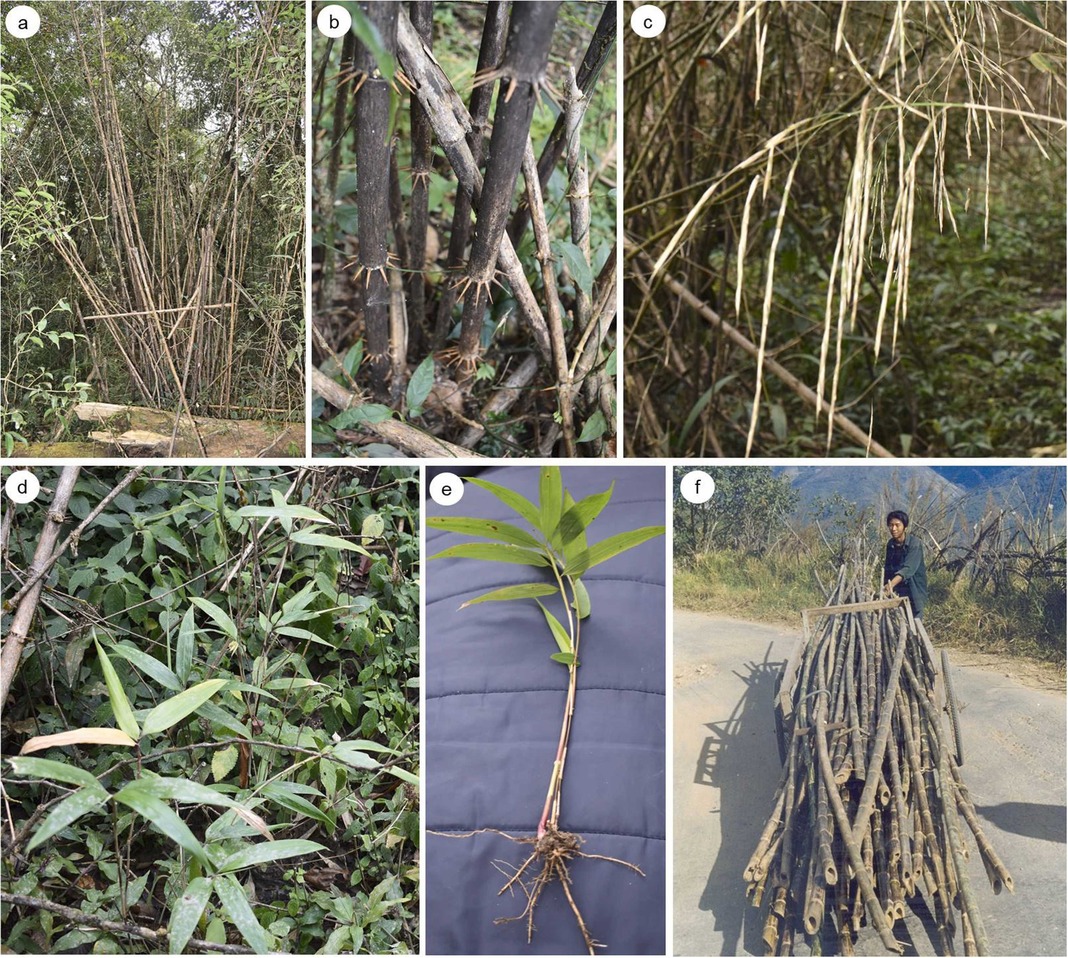By Roopak Goswami
Guwahati, Sep 12: A rare and significant episode of gregarious flowering in the bamboo species Chimonocalamus griffithianus has been documented for the first time in Nokrek National Park, West Garo Hills, raising urgent concerns about the species’ survival and the broader ecological implications.
The bamboo, locally known as “Womana” in the Garo region, is socio-economically important but vulnerable to mass mortality post-flowering, as observed in recent surveys.
The flowering phenomenon, which typically occurs after long intervals of 30 to 100 years, was recorded across 60 clumps in a 3 sq km area within the park’s buffer zone. Most clumps had already died, with residual flowering observed in a few remaining ones. Experts believe the peak flowering occurred between 2022 and 2023, with the final wave expected to conclude in 2024.
The study was done by Harsh B. Naithani, Rajendra K. Meena, and Maneesh S. Bhandari all from ICFRE-Forest Research Institute, Dehradun and Harish C. Choudhary at Forests & Environment Department, Shillong, Meghalaya.
Bamboo is a perennial flowering plant known for its distinctive life history, particularly its long vegetative phase. Most temperate and tropical bamboos flower after long intervals, typically between 30 and 100 years. Some bamboo species flower sporadically, with random clumps in a population flowering fully or partially. Other species flower gregariously, i.e., the simultaneous flowering of all the culms of a single clump or multiple clumps over a large geographical area
Among three Chimonocalamus species in India, Chimonocalamus griffithianus is a socio-economically important bamboo species occurring over a wide geographical span in the northeastern states, namely Nagaland, Mizoram, Manipur, Arunachal Pradesh, and Meghalaya. In Meghalaya, it is known by the names of Spar (Khasi); Tyrpaid (Jaintia); and Womana (Garo). The survey was conducted to record the distribution and flowering events of Chimonocalamus griffithianus in the northeastern states of India during 2023–2024.
In the present survey, a total of six populations of C. griffithianus (one in Nagaland, two in Arunachal Pradesh, and three in Meghalaya) were examined. However, most populations were found in their vegetative phase except a population from Nokrek National Park, West Garo Hills, Meghalaya, exhibiting gregarious flowering coupled with mass mortality. This population of C. griffithianus is located deep inside the core and buffer zone of the National Park and covers an area of 3 sq km, where it forms a shrubby layer under the canopy of other dominant tree species. After surveying the site for 2 km in the buffer zone, a total of 60 clumps were identified. Most clumps had died following flowering while a few clumps were still under residual flowering.
“This is the first report of flowering in C. griffithianus from the Garo Hills, Meghalaya,” one of the scientists associated with the study said.
Based on the present status of flowering and the dead clumps, it was presumed that the peak flowering in the area would have occurred during 2022 and 2023, and that would be completed in 2024. The ground cover under each dried clump was examined for any evidence of regeneration. Seedlings were observed under only 15 % of the dead clumps, mainly the clumps located near water sources.
“This is the only population of C. griffithianus located in the Garo Hills, and it is isolated from the other populations of Meghalaya located at Jaintia and the Khasi Hills. Past flowering records revealed that another population in the West Jaintia Hills, Meghalaya, flowered recently in 2015. In the current survey, this population in the Jaintia Hills was revisited to confirm the status of regeneration but the population size was found suboptimal even almost ten years after flowering, indicating poor regeneration” the study said.
The study underscores the importance of proactive post-flowering management strategies, including community awareness and sustainable harvesting practices, to mitigate the negative effects of bamboo die-offs.
The study calls for the establishment of a national bamboo flowering database to monitor and predict future flowering events, allowing for timely conservation interventions. The researchers also emphasize the need for assisted regeneration techniques to help boost seedling survival in areas experiencing poor natural regeneration.




